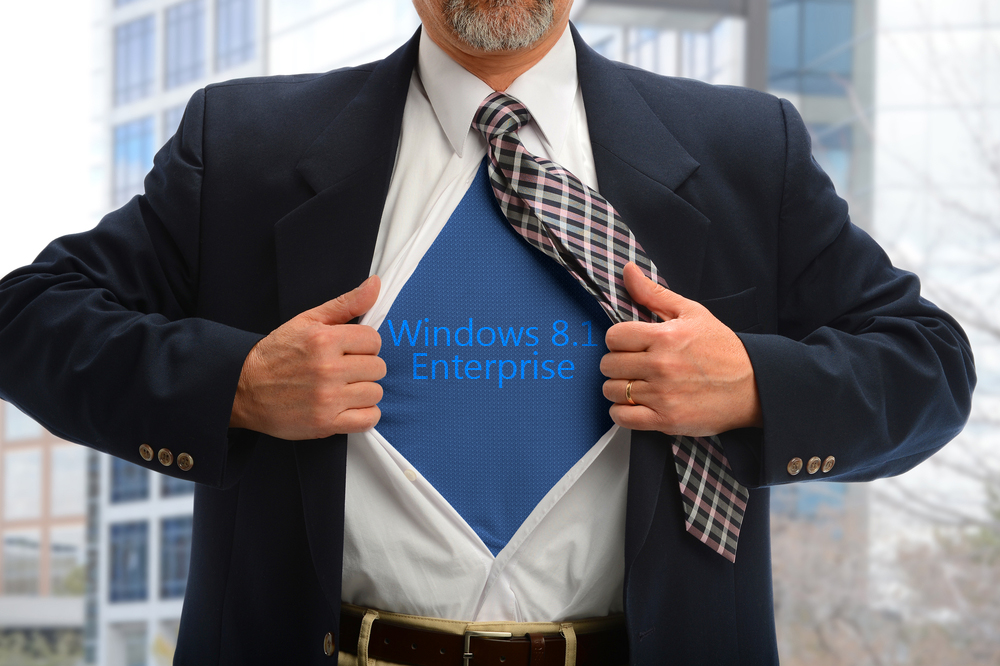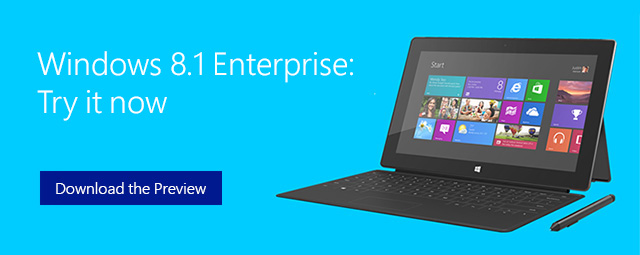Microsoft releases Windows 8.1 Enterprise Preview -- available to download now

Microsoft rolled out Windows 8.1 Preview for developers and consumers last month, and now the software giant has followed it up with an enterprise edition.
This differs from the standard Preview release in a number of ways, including introducing additional advanced features such as Windows To Go, Start Screen Control and DirectAccess.
Assigned Access, which put in an appearance in the early leaked builds of 8.1 Preview (or Windows Blue as it was back then) but was absent from the official release, also returns. This is a kiosk mode that lets you lock down Windows to a single app.
According to Microsoft, this version of the OS refresh adds "premium features designed to address mobility, security, management and virtualization needs of today’s enterprise".
The list of premium features is as follows:
- Windows To Go Creator: IT organizations can create a fully manageable corporate Windows 8.1 desktop on a bootable external USB drive. The drive can be used to support Bring Your Own Device scenarios or be given to contingent staff to access the corporate environment without compromising security.
- Start Screen Control: IT departments can now control the layout of the Start screen on company-issued devices to ensure key apps are easily accessible. IT departments can also prevent users from customizing their Start screen to ensure consistency across individual workgroups or the entire company.
- DirectAccess: Users can seamlessly access resources inside a corporate network remotely without having to launch a separate VPN. Also, IT administrators can keep remote users' PCs up-to-date by applying the latest policies and software updates.
- BranchCache: Employees in branch offices no longer need to download content multiple times across their Wide Area Network (WAN) as BranchCache caches files, websites and other content from central servers locally on hosted cache servers or PCs.
- Virtual Desktop Infrastructure (VDI): Users will enjoy a rich desktop experience and the ability to play 3D graphics, use USB peripherals and use touch-enabled devices across any type of network (LAN or WAN) for VDI scenarios, thanks to enhancements in Microsoft RemoteFX and Windows Server 2012.
- AppLocker: IT organizations can create a more secure environment by restricting the files and apps that users or groups can run on a PC, increasing the security of the device and the data it holds.
- Windows Enterprise Side-Loading: Internal Windows apps can be side-loaded on domain-joined PCs and tablets running Windows 8.1 Enterprise.
- Assigned Access: This new Windows 8.1 feature lets organizations enable a single Windows Store application experience on a device so the user only experiences the specified application but cannot access other system files and applications.
- Inbox VPN Clients: Windows 8.1 extends the ability to third party VPN providers to include versions of their VPN clients’ inbox. This means that on both x86 and ARM (RT) platforms, vendors can work with Microsoft to include their VPN functionality inbox with Windows 8.1.
- Open MDM: With Windows 8.1, new Open Mobile Alliance Device Management (OMA-DM) capabilities are built into the OS and enable mobile device management using third-party MDM solutions, such as MobileIron or AirWatch, with no additional agent required. Enhanced policies allow administrators to manage more settings from both Windows Intune and the third-party MDM solutions for both Windows 8.1 and Windows RT 8.1.
- Workplace join: Trusted devices running Windows 8.1 are allowed to access secured enterprise data.
- Remote business data removal: Allows personal devices to connect to, access and store company content that can be efficiently removed from the device by IT at a later date while leaving the personal data intact.

The last five features in the list were announced at TechEd North America back in June. You can find out more about the new features here and download a copy of Windows 8.1 Enterprise Preview here.
The preview is designed to allow companies to get a head start in testing the operating system in their environments. Windows 8 customers have two years to upgrade to Windows 8.1 after the General Availability of the Windows 8.1 update in order to continue to remain supported under the Windows 8 lifecycle. Like the Windows 8.1 Preview this version expires mid-January 2014.
Photo Credit: R. Gino Santa Maria/Shutterstock
